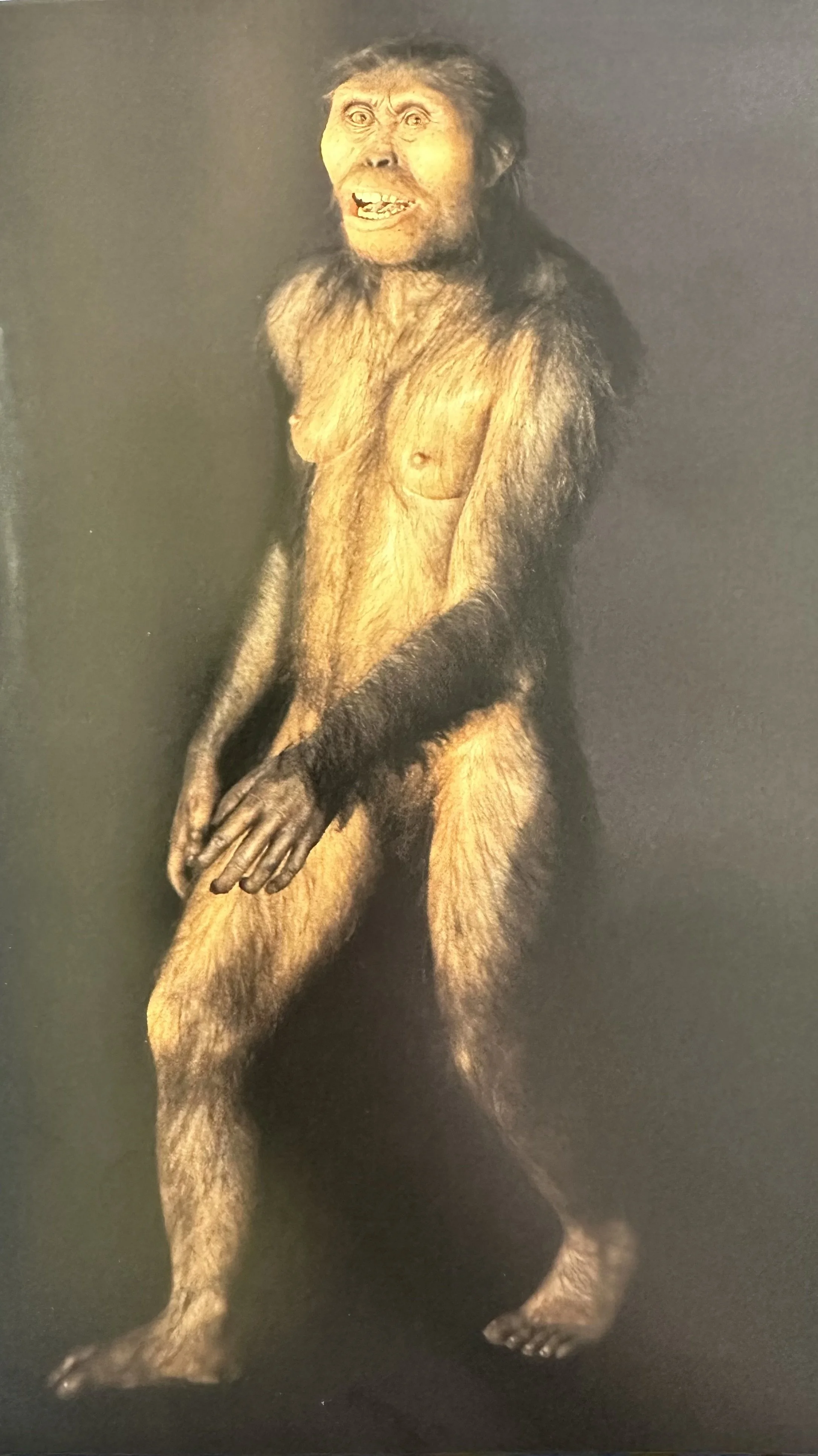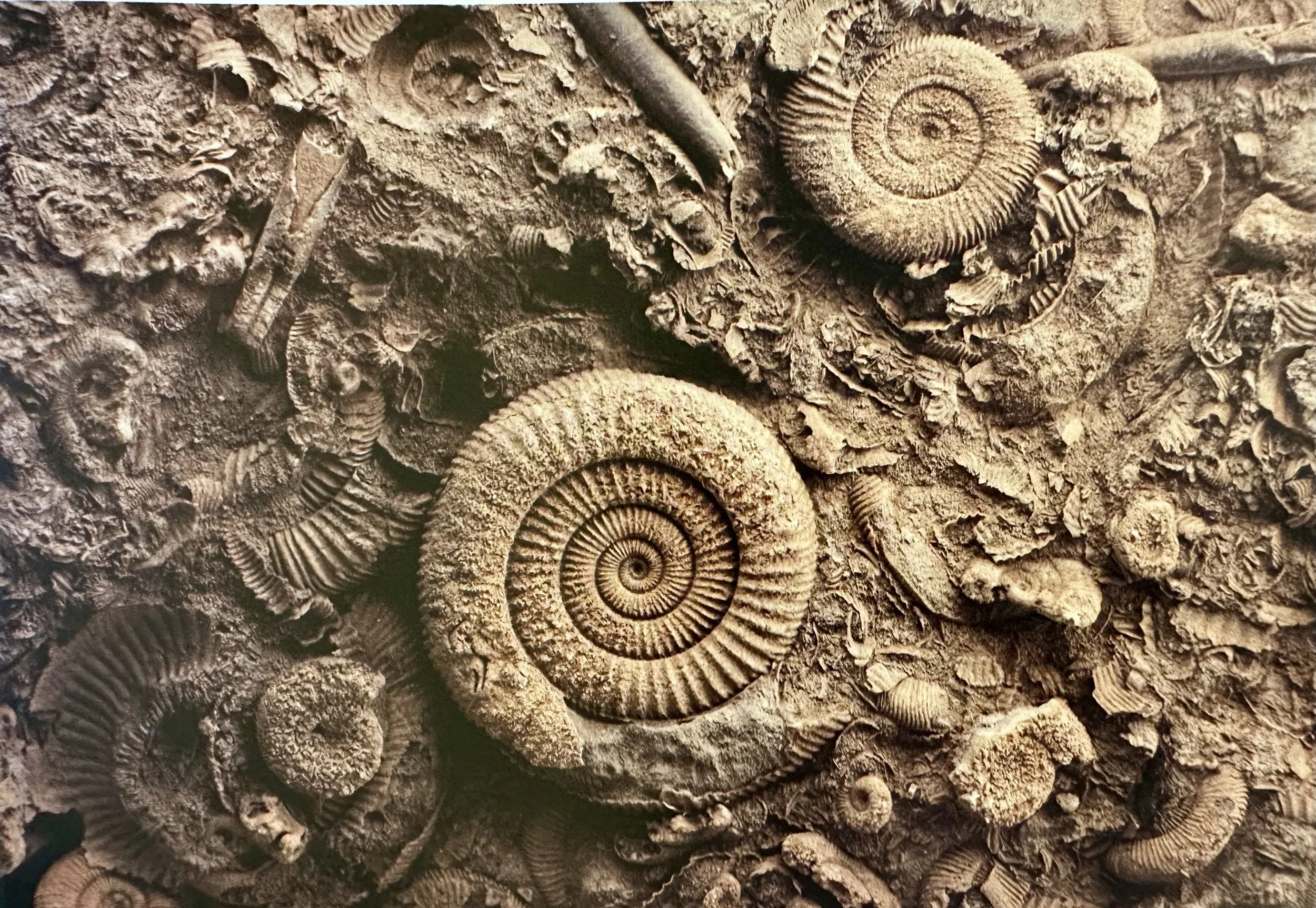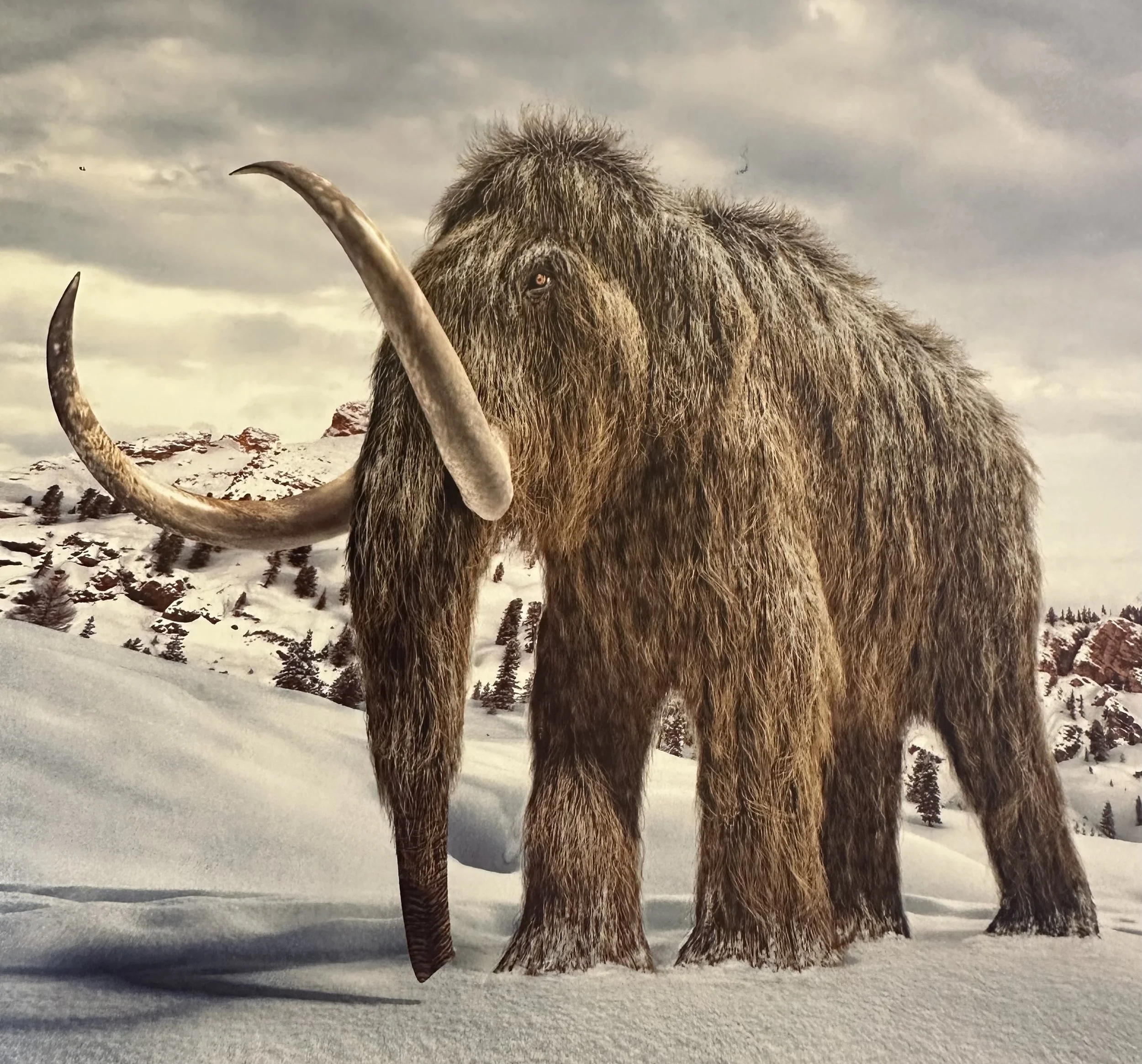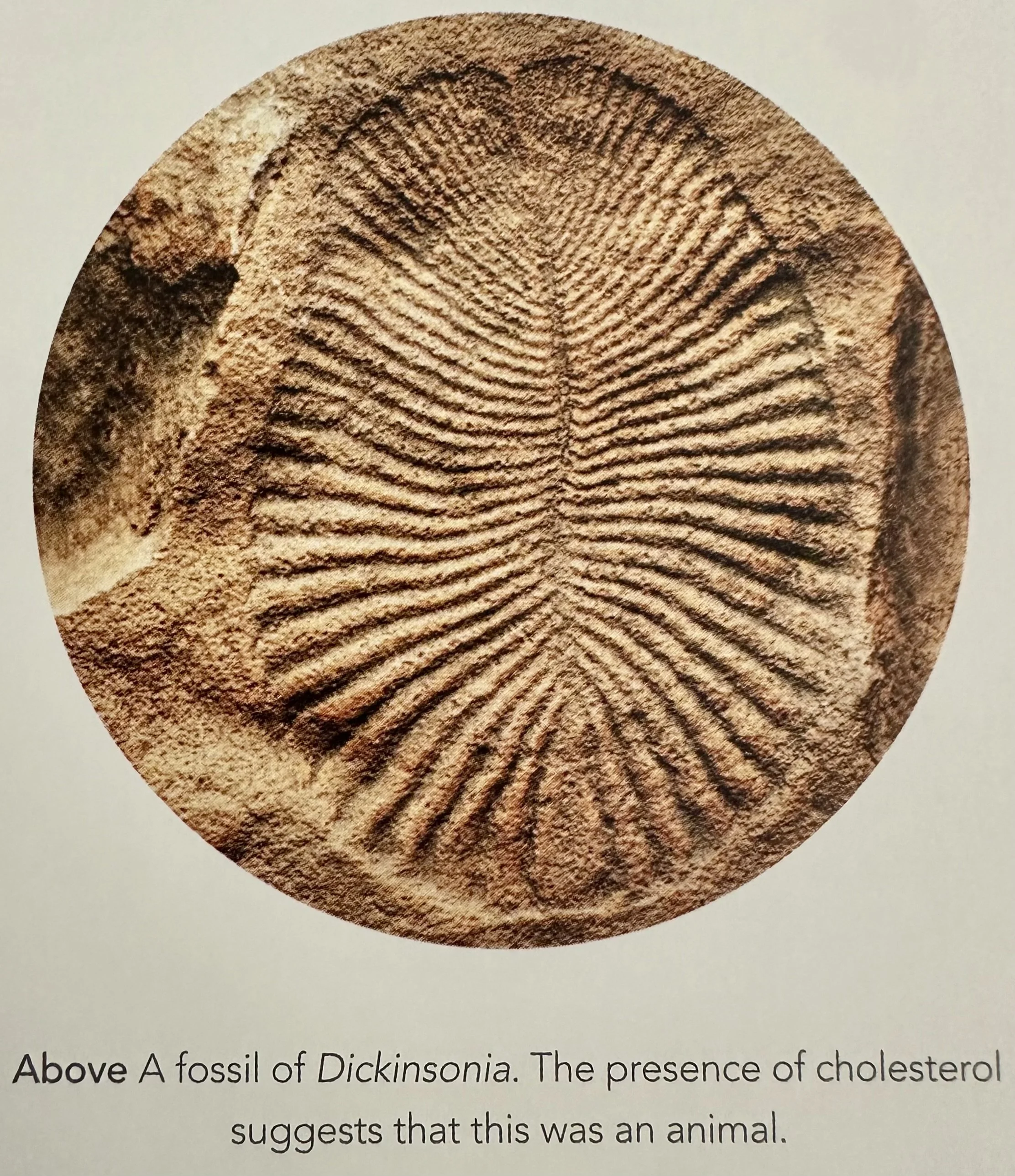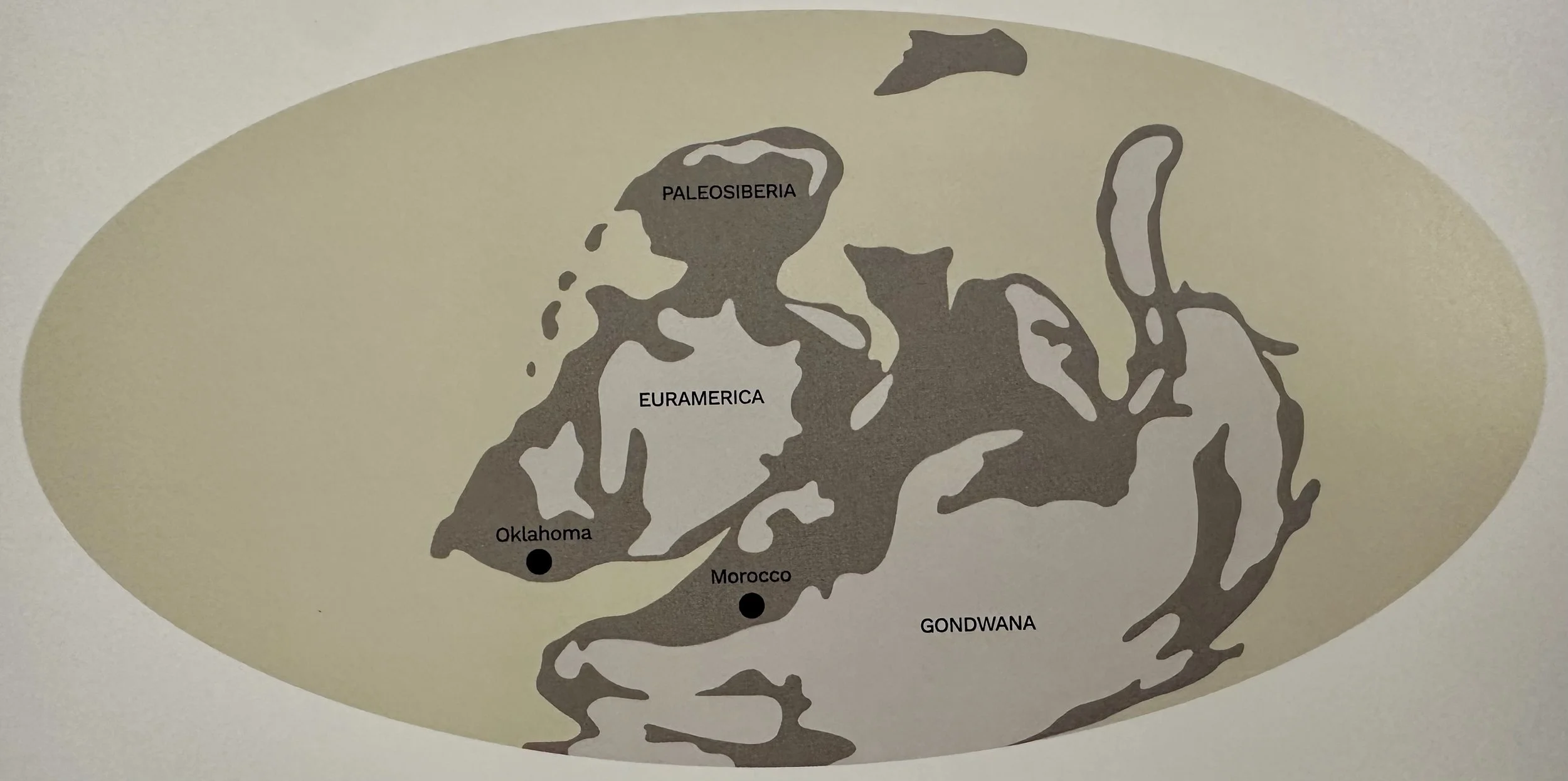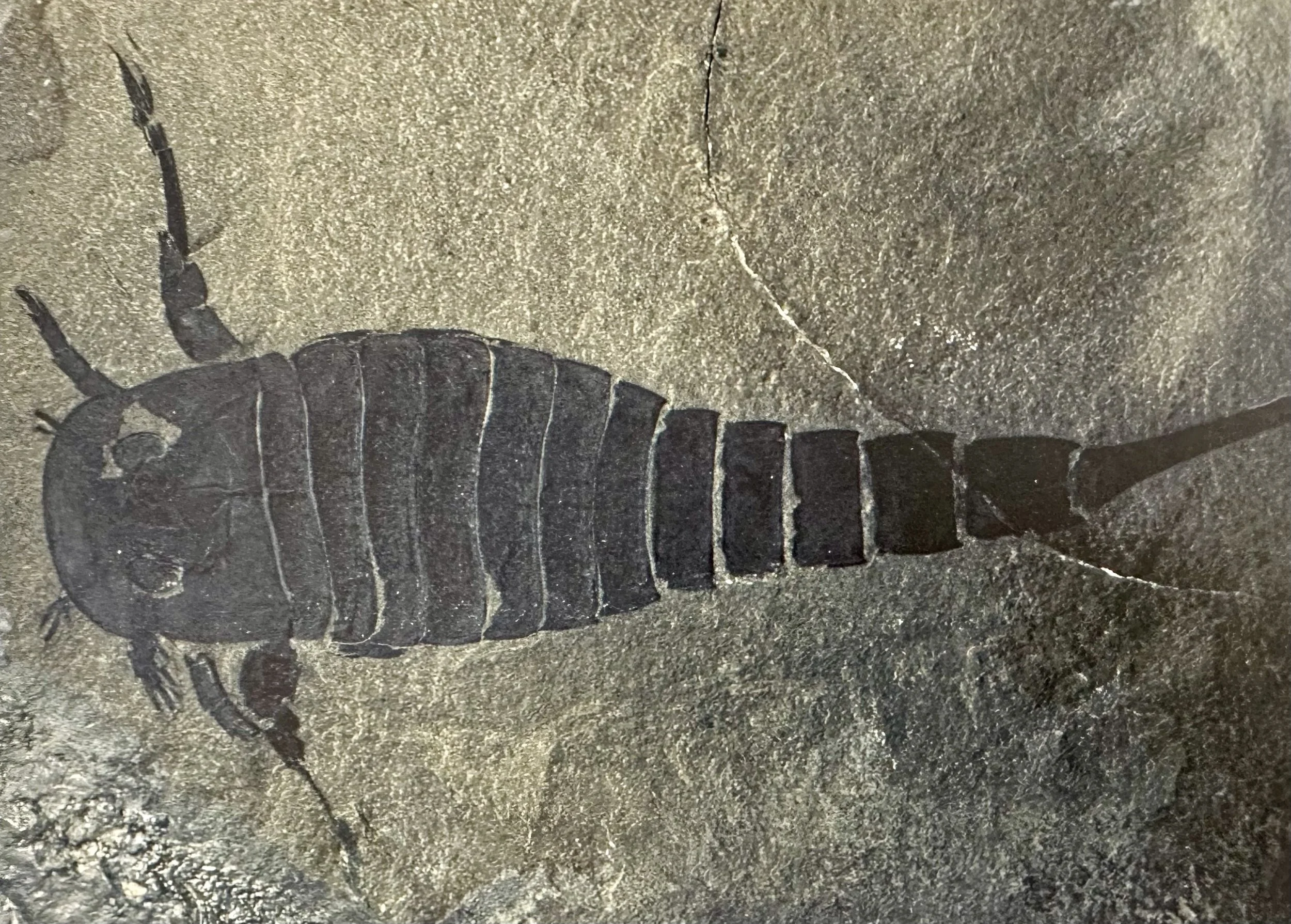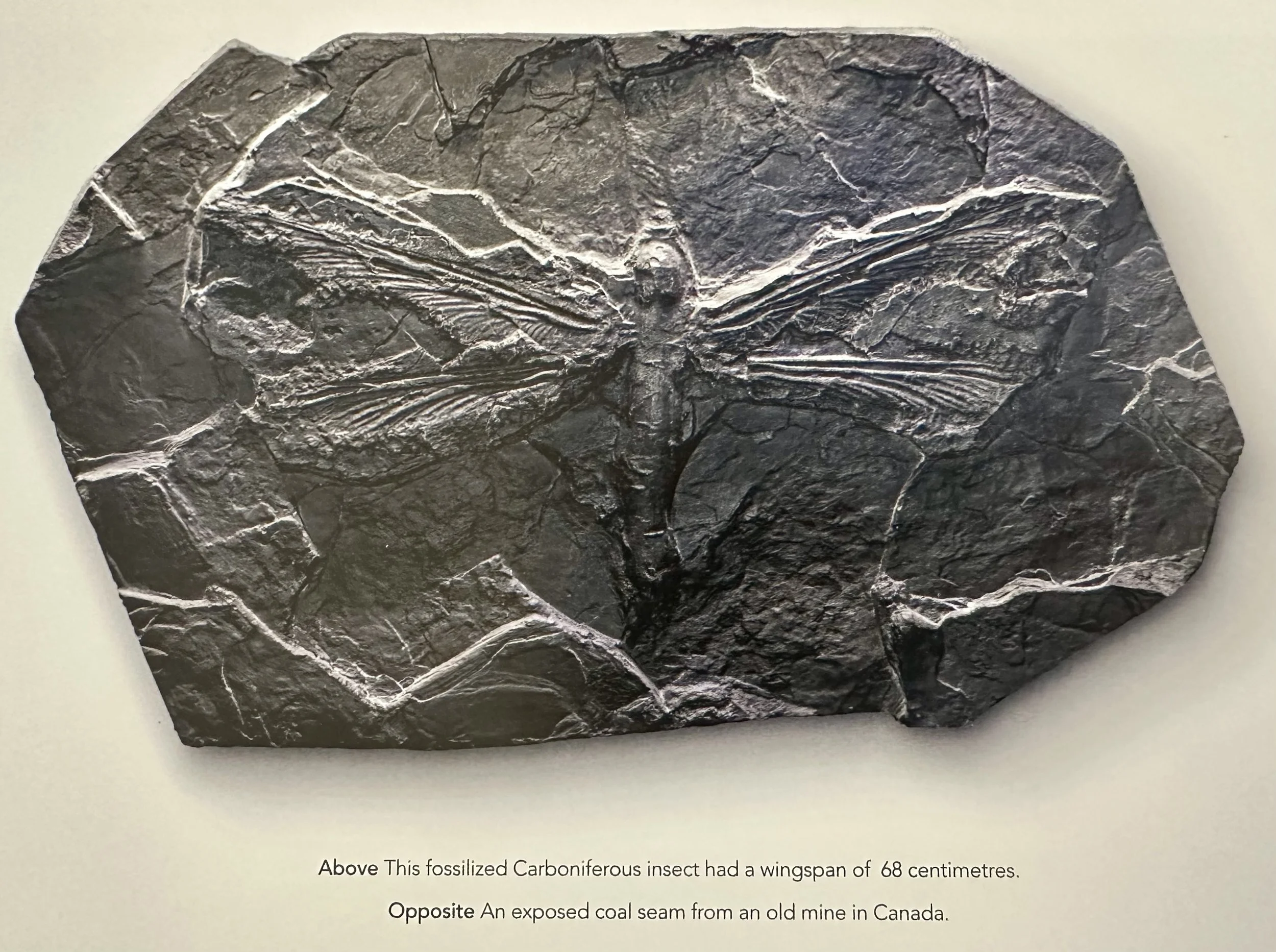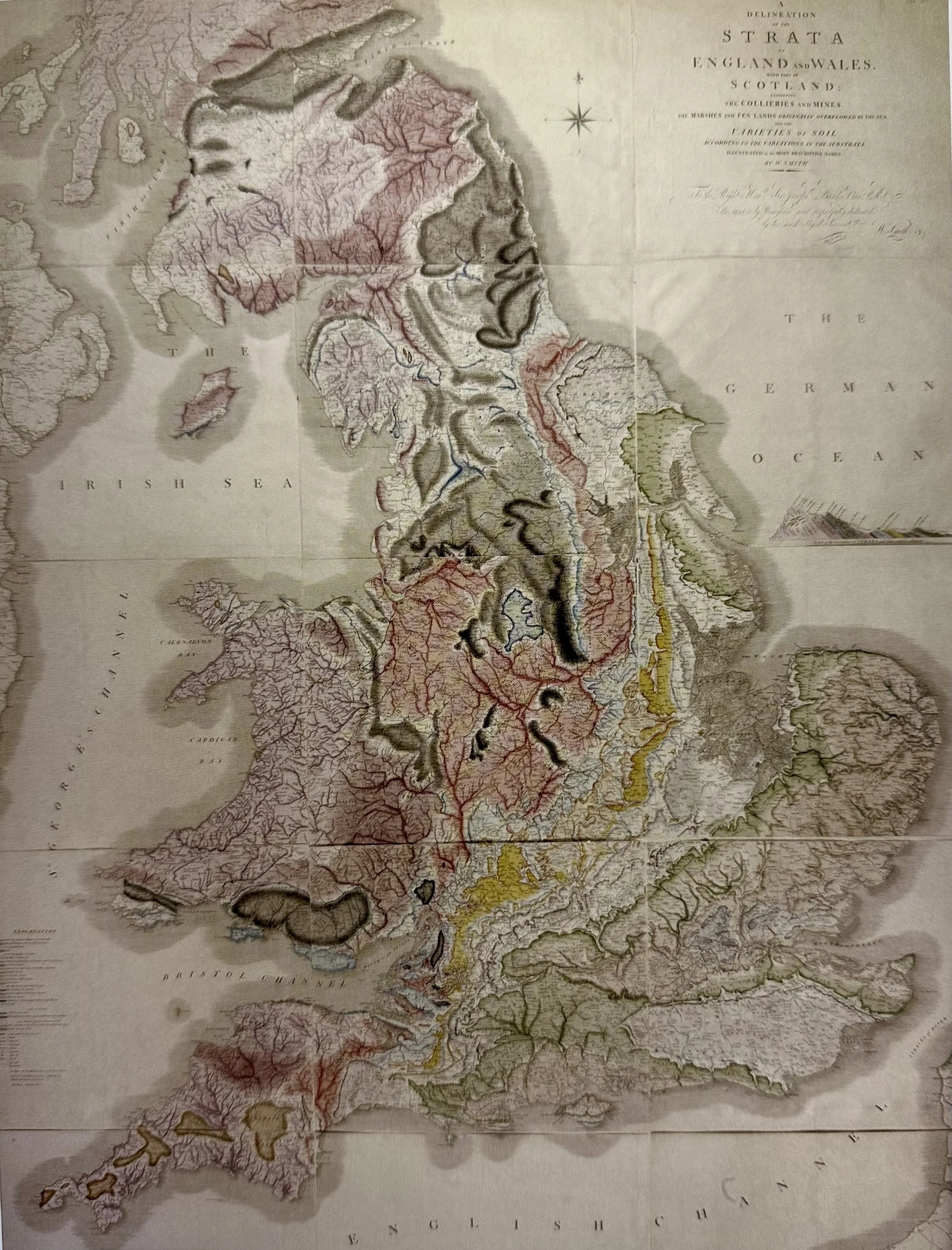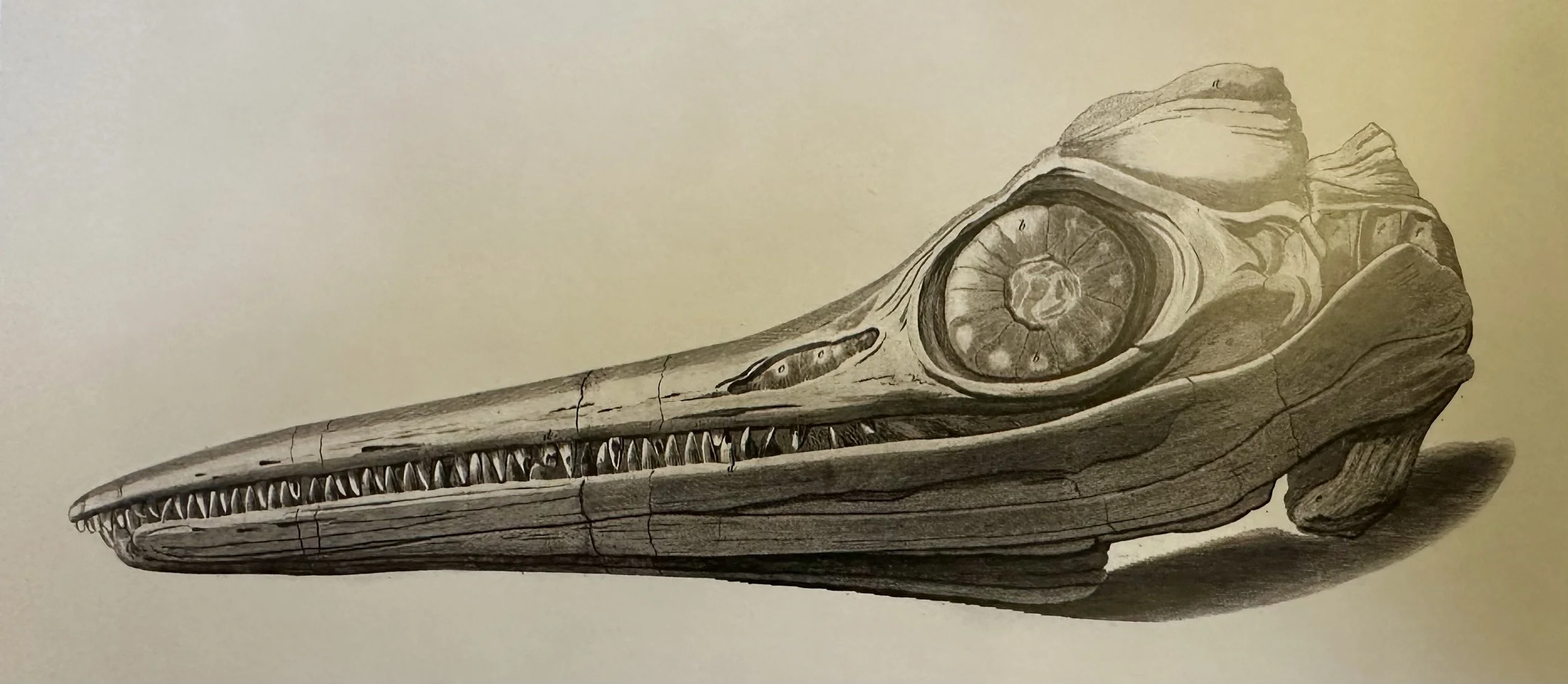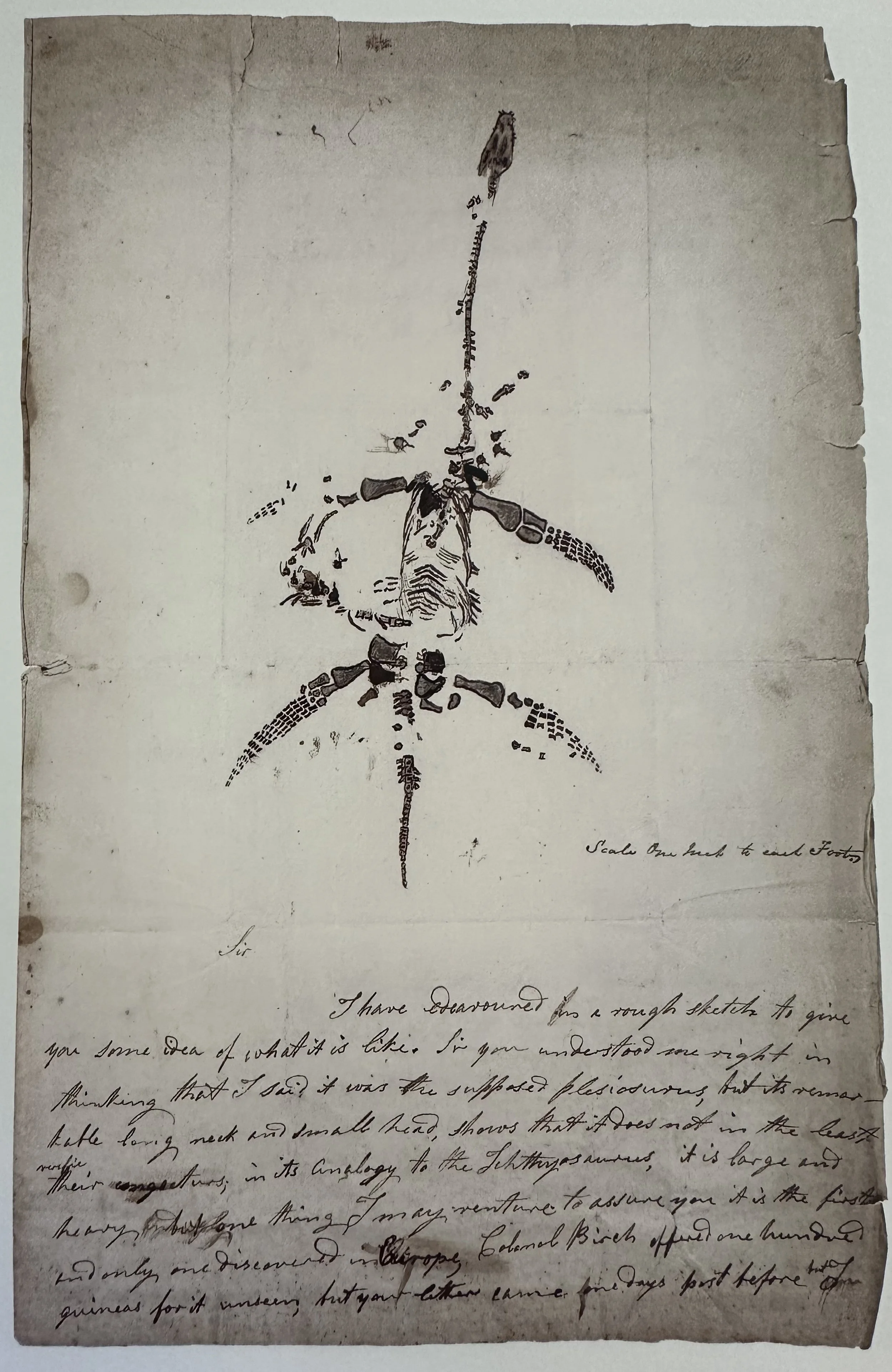Deep Time by Black
Ref: Riley Black (2021). Deep Time: A journey through 4.5 billion years of our planet. Welbeck.
___________________________________________________________________________
Summary
Deep Time is the timescale of the geological events that have shaped our planet. Charting 4.5 billion years of geological history, this is the story of our world, from its birth to the dawn of civilization.
Deep Time explores the formation of our universe and our solar system, the changing landscape of the Earth over the eons, and the infinite changes that led to the evolution of modern humans.
___________________________________________________________________________
Scientific Wonders
Acasta Gneiss: A metamorphic rock formation found in Yellowknife dating to ~4 Ga.
ALH84001: A piece of Mars’ surface that broke off when a meteorite hit the desert planet ~17 Ma. The stone drifted through space until striking Antarctica ~13 Ka.
Amberate: A natural cement from evaporated urine that keeps middens together over long periods of time.
Archaefructus: A species of early angiosperm found in Chinese fossil records.
Baryon: A subatomic particle comprised of at least three quarks.
Baryon Acoustic Oscillations: During the early days of the universe, as gravity pulled on accumulating, dense clumps of matter to bring more particles together, it also generated heat. The heat, in the form of photons, create a pressure that pushed matter apart. When that matter cooled, gravity once again took hold and started to pull more matter together. This cycle kept repeating itself as the universe continued the early phases of its expansion. This constant push and pull, which occurred about 370K years after the Big Bang, created waves through the universe. These are the phenomena that scientists have called baryon acoustic oscillations, which eventually set the length of the standard ruler. The waves in the primordial plasms were similar in structure to sound waves, which are longitudinal waves in which particles oscillate along a direction parallel to the direction of propagation. Imagine protogalaxies scattered along the peaks and troughs of a wave. Eventually, gravity started to win out and the universe’s first electrically neutral atoms began to form from the plasms. Matter could now cool more quickly, which meant that gravity suddenly had an age. While they happened well over 13.7 Ga, the pattern of the baryon acoustic oscillation can still be soon today. The waves were like a set of cosmic wrinkles that determined where galaxies could form in the universe. In fact, part of the evidence for these oscillations comes from the way that galaxies seem to cluster along lengths predicted by such interactions. The standard ruler is defined as the maximum distance the acoustic waves could travel before atoms could form, and pairs of galaxes seem to be separated by this distance more than by other lengths.
Standard Ruler: ~490M light years; the distance between baryon acoustic oscillations.
Pairs of galaxies are commonly separated by one length of the standard ruler.
Big Bone Lick: A mud flat E. of the Ohio River containing a natural salt lick for wild game that is brimming with the bones of ice age mammals.
Burgess Shale: A fossilized seabed high up in the mountains of British Columbia, Canada.
Chicxulub Crater: A 150 km wide impact crater in the Yucatan peninsula; a remnant of the Chicxulub asteroid.
Coelacanth: An ancient form of fish that was thought to have gone extinct around the time of the K-Pg extinction but was recently discovered in the deep water off South Africa.
Cosmological Principle: The distribution of matter in the universe will appear essentially even when looked at from a broad enough scale.
Dawn Redwood Tree (‘Metasequoia’): A tree species that evolved ~100 Ma and was thought to be extinct before being found recently in China.
Doggerland: A large shallow area of the English Channel and the North Sea that was above the surface and home to various hominids until sea levels rose following the end of the last ice age.
Ediacara Hills: An area of Australia N. of Adelaide that hosts ancient stromatolites.
Eocene: A geologic era with an average annual temperature of 15-20 C; higher than today’s global average of 14.5 C.
Erratics (Glacial): Rocks left behind by retreating glaciers and deposited in places far from where they originated.
Green River Formation: An area of the W. US with many fossil slabs dating to ~50 Ma, just after the K-Pg Extinction.
Hadean Eon: The earliest eon of Earth’s history in which surface temperature were ~230 C.
Hydrothermal Vents: Deep ocean vents generally found near areas with volcanic activity, mid-oceanic ridges, and hotspots that, despite lacking sunlight, are teeming with animal life. Bacteria are the key to these odd environments. Bacteria- either out in the ecosystem or within the bodies of animals- are able to use the energy stored within the chemical bonds of compounds coming from the vents, such as methane, to create their food. This means that the strange creatures found around hydrothermal vents, like those immense tube worms, aren’t catching food to eat so much as hosting bacteria inside their bodies that are able to provide food.
Magnetic Striping: A reversal in the Earth’s magnetic polarity. There have been ~183 reversals in the last 83M years, all lasting for different lengths of time.
Methuselah: Earth’s oldest known tree at ~4852 years; a bristlecone pine above 3,000m in CA’s White Mountains.
Once they take root, bristlecone pines grow ~.25mm per year.
Mitochondria: The powerhouse of the cell; create the chemical energy we need to run our essential biological functions. Chemicals inside the body are converted by the mitochondria in our cells into ATP.
Morris Formation: An area of the US from ND to TX and KS to NM containing myriad Jurassic dinosaur fossils.
Neutrinos: Subatomic particles created during the Big Bang with nearly zero mass (a millionth as much mass as an electron). Every m3 of space in the universe contains ~100M neutrinos. In the very first second of the universe, there was no longer enough heat and energy for the just-created neutrinos to do much of anything. Since neutrinos don’t decay or transform into other particles, they’ve persisted all this time.
Physicists estimate that the Cosmic Neutrino Background has a temperature of ~-271 C and a huge input of energy is needed to warm them up to a state where they begin to interact with matter. Sometimes neutrinos can pick up energy from radiation inside the Sun or in supernovae, but for the most part, they are just part of the fabric of the universe.
Oldupai (Olduvai): A gorge in Tanzania that contains myriad early hominid fossils and tools; Masai for ‘the place of wild sisal’ after the abundant sisal that grows in the area.
Oxygenic Photosynthesis: Occurs when photons from the sun meet chlorophyll inside cyanobacteria, the sunlight provides energy for the cyanobacteria to take some electrons from water to create both H and O. The electrons are used by the cyanobacteria to create a compound called ATP, which can transport energy throughout the cell.
Pando: Earth’s largest and oldest organism; a male aspen colony in Central Utah’s Fishlake National Forest covering 40 hA; discovered in 1976 by ecologists Jerry Kemperman and Burton Barnes.
Sea of Tranquility: An 873km wide dark area on the moon given its aquatic-sounding name centuries ago, when early astronomers thought it might be an ocean.
Singularity: A dimensionless point containing all the energy needed to make a universe.
Gravitational (‘Space-Time’) Singularity: A location where the quantities that are used to measure the gravitational field become infinite.
Snowball Earth: Coined by American Geologist Joseph Kirschvink in 1992 to explain the ice-albedo feedback loop that may have impacted Earth ~650 Ma.
Stromatolite: ‘Mattress Rock’; layered sedimentary formations comprised of cyanobacteria and sulfate-reducing bacteria that proliferated over billions of years and introduced great quantities of O to the atmosphere.
Tektites: A small igneous rock fragment created when a large asteroid, comet or meteoroid strikes the Earth’s crust; the intense pressure and heat melts some of the sediment at the impact point.
Trilobites: Ancient and roughly bug-like arthropods that crawled along the seafloor and could roll up like woodlice when threatened.
Zircons: Tiny crystals that form in magma and are carried to the surface by venting and eruptions. They contain U and the ratio of U to Lb (which U decays into) can be used as an absolute dating technique.
___________________________________________________________________________
Misc Quotes
“She sells seashells by the seashore”- the shells in the rhyme are > 180M years old, and were sold by a pioneering paleontologist named Mary Anning, who fossil hunted around the area of Lyme Regis on England’s Southern Coast.
Entropy has been increasing since the first moment of time, and that is an inescapable fact of life. Figuring out why our universe started with relatively low entropy but experiences increasing entropy over time is a task that continued to confound physicists and cosmologists.
Physicists estimate that the observable universe is ~93B light years in diameter.
Dark Energy can overcome gravity.
Life may not have started in a shallow, sunlit pool, but deep in the ocean where the heat of the inner Earth broke through the surface and provided the raw materials for primitive life forms.
If an asteroid or comet hits rocks that have a great deal of C, the impact might release that C back into the atmosphere and cause global warming. Rocks high in S might have the opposite effect, causing global cooling.
___________________________________________________________________________
Terminology
Archosaurs: Comprised of birds and crocodilians.
Anoxic Shales: Rocks that show few signs of life; made from ancient seafloor mud in which there was little O.
Orogeny: Mountain building.
Relative Dating: A dating technique that utilizes superposition and/or biostratigraphy.
Selenology: Lunar Science.
Uniformitarianism: “The present is the key to the past”; geological forces in action today could explain past events (Hutton).
___________________________________________________________________________
Chronology
24 Sep, 2003- 16 Jan, 2004: Hubble Ultra-Deep Field; the Hubble space telescope focuses on an area of space to create an image containing ~10K galaxies. The Ultra-Deep and the HDF were similar enough to help prove the cosmological principle (Deep Time by Black).
18-28 Dec, 1995: Hubble Deep Field (HDF); the Hubble Space telescope focuses in on a small part of the constellation Ursa Major. Technicians’ stich 342 photographs together to create the HDF (Deep Time by Black).
1990: The Hubble space telescope is launched as the first major optical telescope in space (Deep Time by Black).
1977: Oceanographers aboard the deep-sea submersible Alvin discover, astonishingly, that deep hydrothermal vents in the area around the Galapagos islands were teeming with life (Deep Time by Black).
1967: American biologist Lynn Margulis first proposes the theory of mitochondrial endosymbiosis. Her ideas gain acceptance many years later (Deep Time by Black).
1956: Project Poltergeist; American physicists Frederick Reins and Clyde Cowan Jr. detect neutrinos by observing their so-called inverse beta-decay interaction with matter (Deep Time by Black).
23 Dec, 1938: South African trawler captain Hendrik Goosen catches a coelacanth fish while trawling; coelacanth is ancient fish species that had first evolved nearly 390 Ma at the beginning of the Devonian and was thought to be extinct (Deep Time by Black).
6 Jan, 1912: Alfred Wegener unveils his proposal to the German Geological Society arguing that the geology along the edges of today's continents indicates that these landmasses were once coalesced into a single supercontinent. Wegener labelled this ancient place Pangaea - roughly, 'all land'. From there, at some later time, Pangaea broke apart and today's continents drifted to where they are now (Deep Time by Black).
1911: German physician Wilhelm Kattwinkel visits Oldupai Gorge and finds the fossil bones of a prehistoric horse with three toes. These finds catch the attention of other naturalists, which eventually piques the interest of British anthropologist Louis Leakey (Deep Time by Black).
1887: Scientist Bertrand first proposes that mountains are created by motions in the Earth's crust; areas of the Earth’s crust can become squeeze by surrounding rock, eventually, the part being squeezed can rise up above underlying rocks and thrust into mountain ranges (overthrusting) (Deep Time by Black).
1877: Italian astronomer Giovanni Schiaparelli mistakes the lines on the Martian surface for channels; possibly irrigation channels (Deep Time by Black).
Late 19c: The Bone Wars are waged between American paleontologists Edward Drinker Cope and Othniel Charles Mash. They discover and name as many fossil animals in the Morris Formation as they could (Deep Time by Black).
1858: French geographer Antonio Snider Pellegrini publishes a book titled La Création et ses mystères dévoilés (Creation and Its Mysteries Unveiled); showing a connected both South American and Africa, and North American and Europe, connected to one another. Pellegrini proposed that these continents were once connected, and his proof came from identical Carboniferous plant fossils found in both Europe and N. America (Deep Time by Black).
Three centuries earlier, map-maker Abraham Ortelius suggested that the Americas were once joined with Europe and Africa (Deep Time by Black).
1815: English geologist William Smith unveils a geological map of England; the first covering an entire nation (Deep Time by Black).
1794: German physicist Ernst Chladni first proposes the idea that meteorites fall from space. This idea had been widely dismissed at first, and only started to gain acceptance 10 yrs later after French Astronomer and Physicist Jean-Baptiste Biot produced an analysis of 3000 meteorite fragments that fell on the town of L’Aigle in Normandy on 26 Apr, 1803 (Deep Time by Black).
1762: Fossils recovered by the French at Big Bone Lick during the 1739 Chickasaw campaign make their way to France. There, naturalist Louis Daubenton asserts that the bones must have come from a huge hippo and an elephant that still lived somewhere in N. America (Deep Time by Black).
1666: A great white shark is caught off the coast of Livorno, Italy. The shark is brought to Florence for examination by Danish anatomist Nicolas Steno, who realizes the shark’s teeth were similar to glossopetrae- fossilized teeth that had been deposited long ago on a seafloor and then covered by sediment (Deep Time by Black).
8-9 Oct, 1604: Kepler’s Supernova appears in the nights sky; people in the N. hemisphere notice a very bright star in the part of the sky that includes the constellation Ophiuchus (Deep Time by Black).
122: Roman forces in Britain construct Hadrian’s Wall during the reign of Roman Emperor Hadrian; the wall connects the Irish to the North Sea covering 117.5km (Deep Time by Black).
4 Ka: The last wooly mammoth may have survived on Wrangel Island in Siberia (Deep Time by Black).
4.789 Ka: Methuselah begins to germinate, the oldest tree still alive today in the White Mountains of CA (Deep Time by Black).
8 Ka: A series of underwater landslips along Norway’s continental shelf known as the “Storegga Slides”, create tsunamis which submerge Doggerland in water. The few spots above sea that remained are eventually submerged by rising sea levels (Deep Time by Black).
8 Ka: Extinction of dire wolves and giant camels (Deep Time by Black).
10 Ka: End of the last ice age; glaciers retreat and ice caps melt (Deep Time by Black).
10.5 Ka: Neolithic Revolution; humans start domesticating plants and animals, marking the start of farming (Deep Time by Black).
12 Ka: The younger dryas; earth experiences a warm pulse shifting from relatively dry and cool to warm and wet (Deep Time by Black).
60 Ka: Modern humans reach Australia (Deep Time by Black).
100 Ka: Successive waves of modern humans migrate out of Africa, initially spreading through the Near and Middle East and into Asia and Southern Europe (Deep Time by Black).
300 Ka: Anatomically modern humans evolve in the East African rift valley. They have a sophisticated tool set and can alter local ecology through burning (Deep Time by Black).
700 Ka: The Wooly Mammoth evolves from its steppe Mammoth predecessors in Eurasia (Deep Time by Black).
790 Ka: A 1 km size asteroid strikes Earth in modern S. Laos (Deep Time by Black).
6 Ma: Hominids evolve in Africa, with early species such as Ardipithecus (Deep Time by Black).
50 Ma: Himalayan orogeny begins when the subcontinent of India collides with Asia (Deep Time by Black).
55 Ma: Earth’s climate experiences a rapid heat spike with temperatures rising 5 C in a short amount of time, melting ice at the poles and allowing life to spread to places that were otherwise inaccessible (Deep Time by Black).
65 Ma: Jura mountains orogeny begins (Deep Time by Black).
66 Ma: The Cretaceous (K-Pg) Extinction: an 11km diameter bolide strikes the Yucatan. The rock there was rich in sulphate minerals and aerosols of sulphate cooled the climate triggering an impact winter that lasts at least 3 yrs. Photosynthesis entire stops with no new plants growing on land or sea. 70% of all known species perish from either the intense heat or the dark cold that followed it (Deep Time by Black).
125 Ma: The first flowering plants (angiosperms) appear (Deep Time by Black).
175 Ma: Jurassic period; evolution of massive dinosaurs, the first birds, and the formation of North Sea Oil (Deep Time by Black).
180 Ma: The America’s split from Africa and begin their long journey West (Deep Time by Black).
200 Ma: Age of the dinosaurs; from the Triassic period onwards, dinosaurs dominate the land while ammonites thrive in the seas (Deep Time by Black).
202 Ma: The Triassic-Jurassic Extinction; in the middle of Pangaea, between the prehistoric America’s and prehistoric Africa, sat what geologists call the Central Atlantic Magmatic Province (CAMP). This area oozed flood basalts over vast areas of land. Geologists estimate that the eruptions at the end of the Triassic ended up covering ~11M sqkm. Naturally, the habitats covered by the lava were devastated by the outpouring. But the most destructive effects came from the incredible amounts of ash, dust, CO2 and sulphur dioxide that were released along with the molten rock. The effects were very similar to what had transpired at the end of the Permian. Some of the CO2 and sulphur dioxide was taken up by the seas, and the sudden influx of these compounds caused the oceans to acidify. Shell-building organisms, from ammonoids to plankton, again struggled to build their shells. The climate changed dramatically, too. Copious amounts of sulphur dioxide in the atmosphere likely triggered rapid global cooling. The warm Triassic world that was so kind to reptilian evolution came to a rapid close. As before, the large amounts of carbon dioxide thrown into the air by the eruptions set the stage for global warming following the cold pulse. Those animals that were capable of dealing with the cold soon found themselves facing a world that was even hotter than it had been previously. All of these changes, from sunlit seawaters to the interior jungles of Pangaea, resulted in the loss of many forms of life. Up to 34% of known genera in the oceans died off. But dinosaurs seemingly weren't fussed by the Triassic Jurassic Extinction. Theropods, sauropodomorphs, and ornithischians all survived and entered the first days of the Jurassic without skipping a beat (Deep Time by Black).
243 Ma: Evolution of the Nyasaurus, the earliest known dinosaur; found from Triassic aged rock in Tanzania (Deep Time by Black).
~249 Ma: Marine reptiles first become suited to life in the oceans (Deep Time by Black).
251 Ma: The Permian Extinction; the greatest mass extinction of all time wipes out 90% of species and clears the way for new life forms to dominate on land and in the sea. The cause may have been the colossal volcanic eruptions that formed the Siberian traps (Deep Time by Black).
275 Ma: Beginning of the Permian period; the supercontinent Pangaea contains most of the landmass, and mammal-reptile hybrids known as synapsids dominate terrestrial ecosystems (Deep Time by Black).
359- 299 Ma: The Carboniferous period; incomprehensible amounts of C are buried and transformed into coal; stands of primitive trees grew thick and tall. The lignin that allowed them to do so made them hard to breakdown. Bacteria capable of decomposing lignin had not yet evolved, or were not very efficient at it, so great logjams of these ancient trees piled up in the carboniferous swamps. Over time, with heat and pressure, it turned into coal (Deep Time by Black).
376-359 Ma: The Late Devonian extinction occurs in a number of distinct pulses (Deep Time by Black).
372 Ma: The Kellwasser event; marked by an uptick in background extinction rates in which O levels in the ocean seem to have plummeted (Deep Time by Black).
359 Ma: The Hangenberg event; marked by an uptick in background extinction rates (Deep Time by Black).
390 Ma: Evolution of the earliest gymnosperms- a group of plants that includes pine trees (Deep Time by Black).
400 Ma: The first insects evolve (Deep Time by Black).
419 Ma: Fish evolution explodes; the seas fill to the brim with ancient relatives of sharks, bony fish, coelacanths, lampreys, and many more, including the ancestors of the vertebrates, which would eventually evolve limbs and drag themselves out of swamps to make their homes on land (Deep Time by Black).
440 Ma: The Ordovician-Silurian extinction; as the Gondwana landmass drifted over the South Pole, the climate suddenly cooled. Massive glaciers formed around Gondwana and the seawater turned to ice. Sea levels dropped, ice built up, and many species perished. Almost as quickly as the climate cooled, it warmed again. The rapid warming of the oceans led to waters that were depleted in O while also being temporarily toxic to life. The cold and hot flash occurred in two pulses about 1M years apart, accounting for a loss of ~85% of known marine species. Within ~5M years, the seas had recovered fully (Deep Time by Black).
470 Ma: The earliest plants grow on land and spread into the terrestrial realm (Deep Time by Black).
488 Ma: Beginning of the Ordovician period; most of the land mass is gathered together into the Gondwana supercontinent, where the ecology is dominated by the marine ecosystem of shallow seas. The first bony fish appear and the first organisms begin to colonize the land (Deep Time by Black).
541 Ma: Cambrian explosion; all of the branches of modern multicellular life appear overnight. Scientists hypothesize several ideas. O levels in Cambrian water rose, allowing animals to breathe more efficiently and grow larger. The amount of the mineral Ca also increased as rocks on the continents eroded and their contents were swept to sea, with the excess Ca providing the raw materials to construct hard body parts. The evolution of eyesight may have played a role, with early predators and prey starting an evolutionary arms race between hunters and the hunted (Deep Time by Black).
650 Ma: Snowball Earth; the whole Earth is as cold as modern-day Antarctica; hypothesized from tillite evidence (Deep Time by Black).
730 Ma: Avalonia; formation of the first rocks of what will become Britain, with the creation of an ancient geological formation known as the Avalonia terrace (Deep Time by Black).
~1.45 Ga: Complex cells; the first eukaryotic cells are created when endosymbiosis leads to the origin of mitochondria. It’s hypothesized that one predatory cell tried to engulf another cell. The would-be dinner cell was taken into the cell and stayed there to become a part of it- a phenomenon known as endosymbiosis. Instead of providing a quick meal, mitochondria started to produce energy for the host cell. This is known as the endosymbiotic theory. As these ancient cells reproduced, the mitochondria went along for the ride. They even have their own form of DNA, called mRNA, which is transmitted along with nuclear DNA when cells reproduce (Deep Time by Black).
2.45 Ga: Snowball Earth; O reacts with methane in the atmosphere to produce CO2, which has a much weaker greenhouse effect. The Earth is plunged into a global glaciation for hundreds of millions of years (Deep Time by Black).
2.5 Ga: Start of the great Oxygenation; photosynthetic bacteria start to produce O, beginning the process of atmospheric transformation known as the Great Oxygenation Event (Deep Time by Black).
During the Paleoproterozoic, the world’s oceans were relatively rich in dissolved Fe. In solution, this is called ferrous iron. But when Fe is oxidized, with O nabbing another electron from the Fe, the metal changes. It becomes ferric Fe, which then precipitates out and sinks. As the O joined with the Fe, the new molecules of Fe-Oxide sank to the seafloor in layer after layer through the years. Just like stromatolites creates layers beneath them, photosynthesizing bacteria created banded layers of Fe rock until the majority of the Fe in the water was used up. At that point, the O was free to do something else. It went up into the atmosphere creating what researchers called the Great Oxygenation Event (sometimes known as the Great Oxygenation Catastrophe as O was deadly to many forms of life at this time) (Deep Time by Black).
2.5 Ga: The Proterozoic Eon begins; many of the greatest events in Earth’s biological history take place in this eon, which lasts until 542 Ma (Deep Time by Black).
3.9 Ga: The Archaean Eon begins; the Earth’s oldest rocks date to around this time, as does the first bacterial life, which left structures known as stromatolites. The atmosphere at this time is a toxic mix of methane and ammonia (Deep Time by Black).
4.3 Ga: Dating of the oldest known rocks on Earth in Jack Hills, W. Australia (Deep Time by Black).
4.49 Ga: The Hadean Eon begins; so named because most of the Earth is a hellish inferno of molten rock with an average surface temperature of ~230 C. Incredibly some fossils suggest that life exists right into the middle of this era, around deep-sea vents (Deep Time by Black).
4.49 Ga: Meteorites bombard the young Earth, bring water and potentially leaving traces of rock that are older than the Earth (Deep Time by Black).
4.5 Ga: Moon lava; basaltic flows on the moon create the oldest rocks seen there today (Deep Time by Black).
4.51 Ga: Formation of the moon; a small planetoid smashes into the young Earth, disintegrating into a cloud of rock and dust that coalesces to form the Moon (Deep Time by Black).
4.55 Ga: Formation of the Earth; a ball of rock and dust aggregates to form the young planet (Deep Time by Black).
4.56 Ga: Formation of the solar system; the center of a huge disc of gas and dust collapses to form our star, while around it, smaller aggregations coalesce (Deep Time by Black).
~7 Ga: The Great acceleration; universal expansion accelerates (Deep Time by Black).
13.52 Ga: Era of star and galaxy formation; the first stars and galaxies begin to form as clouds of gas collapse under the influence of gravity, igniting fusion and blazing into life (Deep Time by Black).
13.77 Ga + 380 Ka: First radiation; the universe becomes transparent to light; the radiation from this moment can still be seen today in the form of the Cosmic Microwave Background (CMB) (Deep Time by Black).
13.77 Ga + 1 sec: Decoupling; changes in the density of the newborn universe allow neutrons, almost massless ‘ghost’ particles, to roam free for the rest of time (Deep Time by Black).
Big Bang + 10-36 and 10-32 sec: Cosmic Inflation; in this time, the universe doubles in size at least 85x, reaching a volume somewhere between that of a grain of sand and a football (Deep Time by Black).
13.77 Ga: The Big Bang; time and space begin with a colossal expansion from a point of infinite density, known as a singularity (Deep Time by Black).
___________________________________________________________________________
